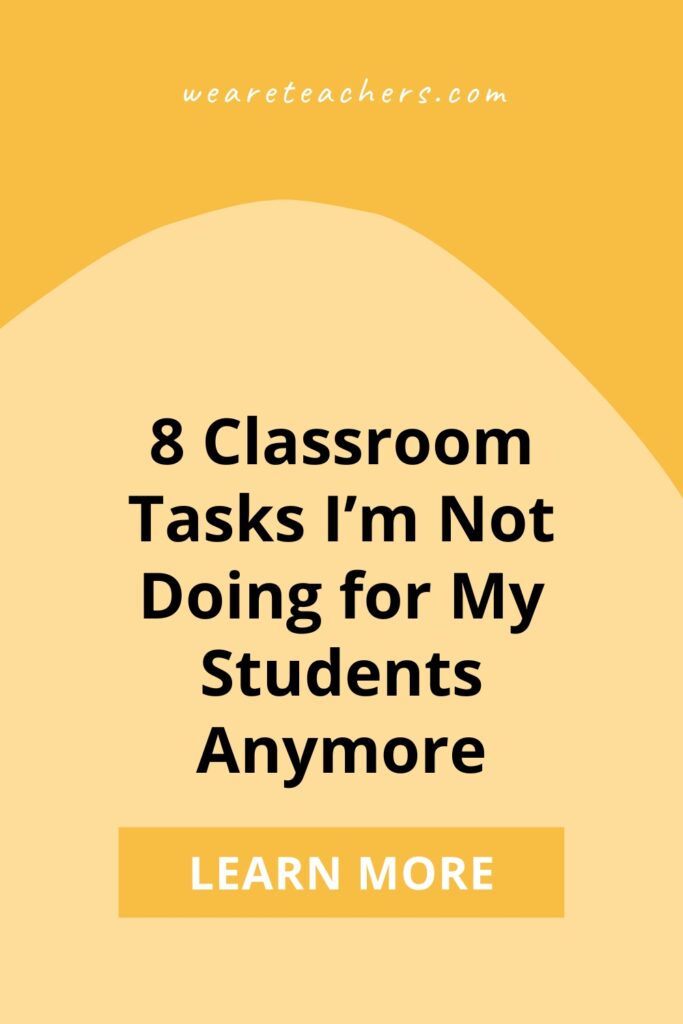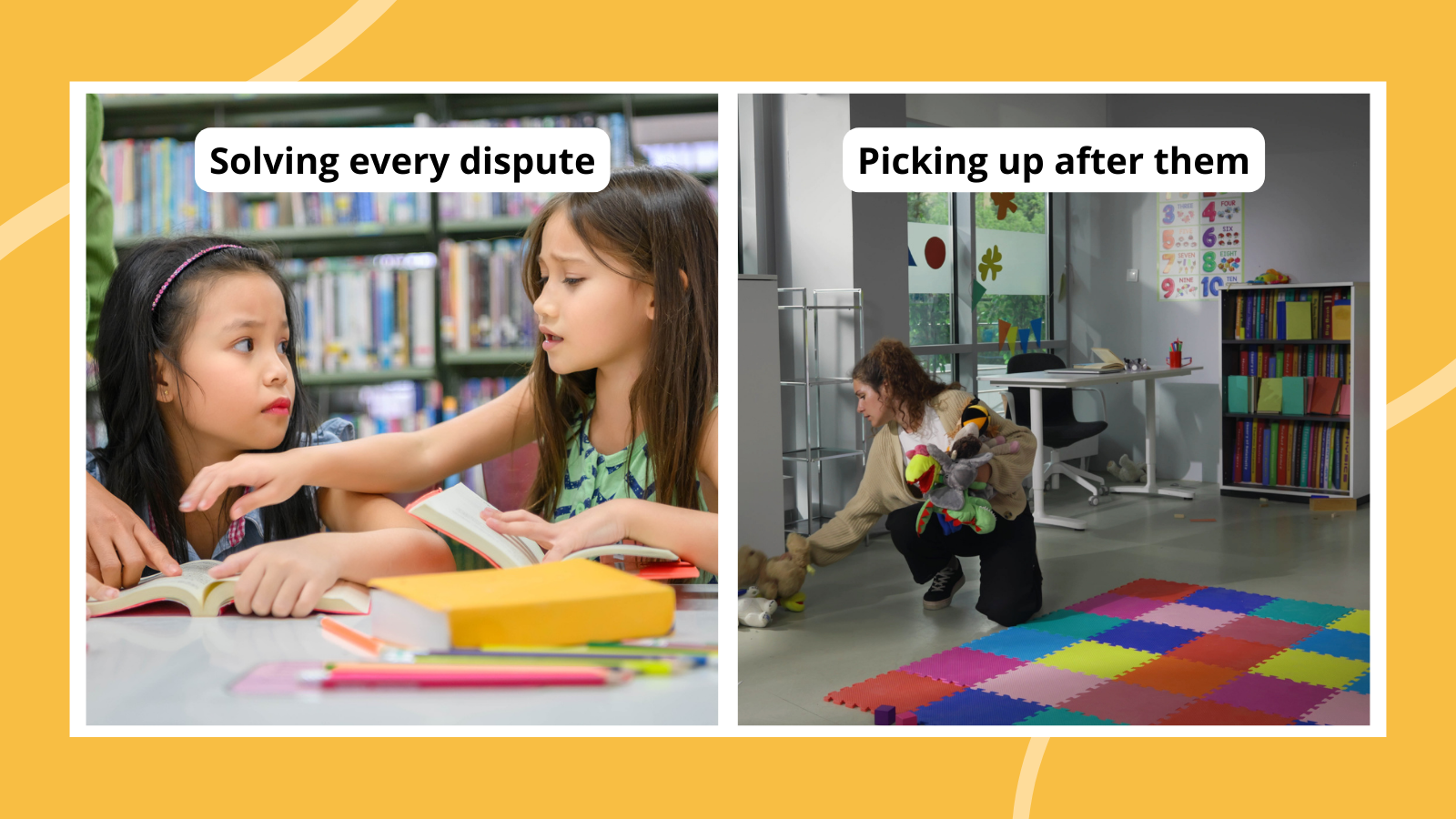You often talk about building your students’ independence by having them do things for themselves. But sometimes, especially when it seems easier or faster, you just do it yourself. Trust us, we get it.
But completing classroom tasks that students can do themselves often defeats the purpose. Much like lawnmower parents, we end up keeping kids from learning strategies to complete these tasks for themselves. Of course, there are always situations where a child might need extra support, and that’s different. But here are the areas where I try to encourage independence for most students in my classroom.
1. Handing out and collecting materials
How often do you end up scurrying around the room to distribute handouts or collect supplies yourself, just to get the job done? Make a plan to put students in charge of wrangling papers and supplies, and watch them take ownership almost immediately.
2. Cleaning up
Certain students—I’m not naming names—either resist cleaning up or are seemingly oblivious to the mess they just made. Others are simply used to an adult picking up after them. This behavior becomes more obvious when you ask students to clean up the entire classroom for the common good, not just their personal messes. They whine and shirk and generally act put-out. Be firm and insist they clean up every time; the pushback will wane when they learn they have no choice.
3. Applying Band-Aids and other simple first aid
Every classroom has at least one student who seems to live in the nurse’s office. Keep students in the classroom by having a supply of Band-Aids, alcohol wipes, and other essentials at the ready. Then, with your older kids, teach them how to clean and bandage their own scrapes (finally, an application for the blood-borne pathogen training!). This teaches them great self-care skills they can use later.
4. Tying shoes
I used to teach first grade, so I know what a challenge tying shoes can be, especially for students with fine-motor-skill struggles. But that doesn’t mean you have to tie every shoe that comes unlaced. Suggest students ask a classmate for help or teach them how to tie a double knot. I’ve also suggested that parents watch one of many Internet tutorials available and practice at home with their child. One idea might be to generate and post a list of shoe-tying experts who should be asked before coming to the teacher.
5. Stepping in to solve disagreements
It’s so tempting to step in right away when the bickering starts or when a kid asks you to help them with a disagreement. (And there are times when you should definitely take charge, especially if physical violence has occurred or is threatened.) We want children to navigate solving conflicts for themselves so that they can do this as adults. So equip them to manage their own conflicts and watch the self-sufficiency magic happen.
6. Opening food
Another area where we want to encourage students to figure out their own solutions is during snack and lunch time. When a student wordlessly shoves a banana in your face to open it for them, it is perfectly OK for you to tell them to try to open it on their own. One tool to offer is “food scissors” that are regularly washed (also by students!) and hung in a central location. Students can use these scissors to open everything from squeeze yogurt to granola bars. I’ve also offered tutorials on how to open a milk carton or a Capri Sun, which have saved me countless hours of work.
7. Picking up things from the floor
My days of getting on my hands and knees to remove bits of pencil shavings from the carpet are over. Now, students know it is their collective responsibility to keep their classroom neat. From pencils to tissues to little pieces of paper, students shouldn’t leave for the day without picking it all up. Don’t forget those pencils that slow the custodian down and are a tripping hazard!
8. Carrying backpacks and other personal belongings
We have seen a rise in backpack size and clunkiness in the past few years, especially with the addition of wheeled backpacks the size of the children who own them. I have also seen a rise in parents and caregivers carrying or rolling backpacks for children. Again, it might be faster for you to take a child’s backpack in hand to speed things along, but they aren’t learning much from that experience, except that they can ask you to do it for them and you will. So show them how to pack their bag at the end of the day and then watch them take pride in ownership and ability.
What’s your favorite way to encourage kids’ independence? Let us know in the comments!
Plus, for more articles like this, be sure to subscribe to our newsletters.


